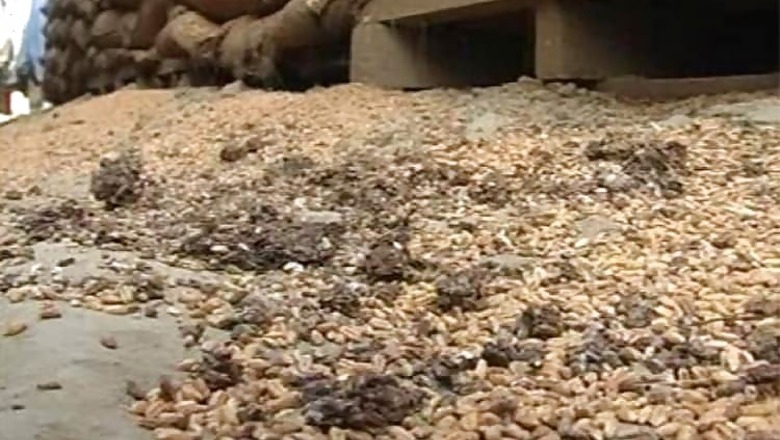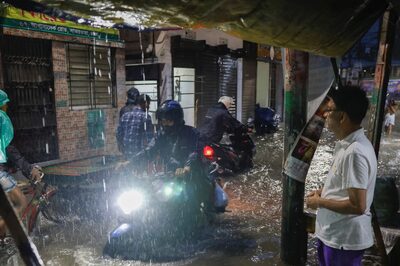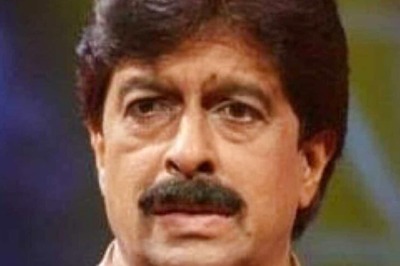
views
Farmers seem to have become the new flavor of the season. After being steadily ignored for years, farmers and their sufferings have become hot and spicy topic for discussions over luncheons, seminars and padayatras.
Not an hour passes when the farmer is out of breaking news or headlines. That our system has gradually driven our farmers to doomsday is a fact proven by loads of evidence. Farmers have been a given a rough end of the stick both at sowing stage and during storage stage which is what has gradually driven them to a state of despair.
Whereas the vagaries of monsoon leave farmers at the mercy of nature they have had little support from the country’s planners to store and transport their produce to the market. It is not uncommon that despite a bountiful harvest, farmers have to helplessly watch the crop waste after long exposure to rain and sunshine under open sky.
As per the Crime Record Bureau on an average 13,700 suicides are committed by farmers per year with highest suicides at 18,240 in 2004. Considering the average the total number of farmers’ suicides for the last decade is, 1,37,000. The worst affected farmers were in Vidharbha where suicides were much higher than the national average.
The irrigation scam in Maharashtra that surfaced in the Economic Survey 2012 is a pointer where the money allotted to irrigation goes. Against an allocation of Rs 35,000 crores ($5.6 billion) from 1999-2009 under various irrigation schemes, irrigation potential had increased only by 0.1% in the past decade.
Large portion of allotted funds seemed to have been siphoned off by corrupt local leaders. Various irrigation projects were left incomplete at various stages with no sight of relief to the farmers.
Amidst allegations of corruption the then state irrigation minister Ajit Pawar resigned in September 2012. The Maharshtra government subsequently issued a white paper which gave a clean chit to the minister and showed the irrigation potential had raisen by 28%.
In fact Ajit Pawar was brought back as the deputy chief minister. However, studies by non-profit and independent organizations indicate the projects turned out to be white elephants and did not yield the desired results.
The way politicians treated farmers was even worse. When faced with a situation that a farmer was on fast for over 55 days demanding water and power for irrigation, Ajit Pawar sarcastically chided the farmer and wanted to know if he expected the minister to urinate into the dam to fill it up? Although the minister was forced to apologise for his crass remark, it was clear such attitude only added salt to the farmers’ wounds.
No wonder starvation from a series of crop failures coupled with unhelpful attitude of the rulers ultimately led them to become a statistical number in farmers’ suicides.
Such attitudes no doubt were paid back when the ruling party lost elections held in the state following Lok Sabha elections where the Congress party was thrown out of power and managed to garner a miniscule number of seats compared to the over 200 they won in 2009 elections.
The point to be noted is, irrespective of the those in power, farmers were ignored not only by politicians but by the planners of the country. How do we fare when our farmers deliver bumper crop year after year?
The Institute of Mechanical Engineers (IME) on global food shortage estimated India wastes around 21 million tons of wheat due to inadequate storage facilities and poor distribution which is equivalent to entire food production of Australia.
Almost 40% of fruits and vegetables too go waste due to lack of storage and poor transport. Punjab faced the worst in wastage of wheat. Mountains of wheat rot in rains next to farm lands as successive governments are unable to provide silos to store crops. Large quantities finally become unfit for human consumption which had to be set on fire to clear the garbage.
Hunger doesn’t care for even self esteem. When the Railways had dumped rice which was even unfit for human consumption in Jagatpur, Orissa, hundreds of starving people dug up the riverbed to retrieve and carried them away to their homes. It’s a shame and disgrace that this happens even 67 years after Independence!
This is where the country’s Planning Commission failed to even provide basic storage facilities for the produce. That India had to import food grains even after producing such bumper crop is a sad commentary.
Isn’t there a way out of such vicious cycles? Why not?
The Green Revolution spearheaded by Norman Borlaug and Dr MS Swaminthan in 1960s and the subsequent White Revolution by Dr Verghese Kurien lifted India’s agriculture by several notches making it even an exporter. If a similar result-oriented exercise is undertaken with use of latest farming techniques and technology brought in for safe storage and quick distribution through a countrywide network of roads, India could still ride over the crisis and turn threat into an opportunity.
(ER Ramachandran is a well known sports writer, cricket aficionado and commentator on current affairs.)




















Comments
0 comment